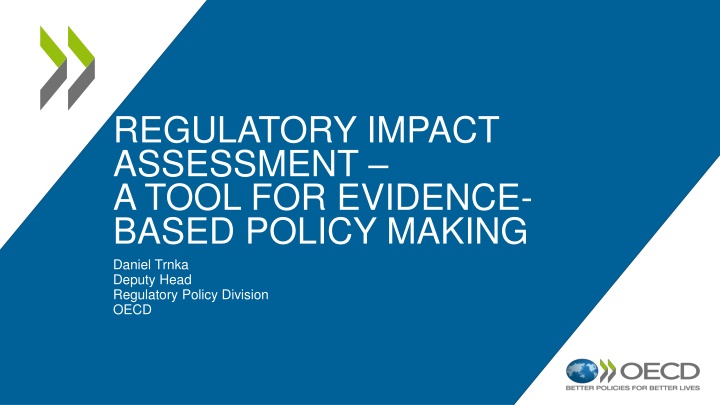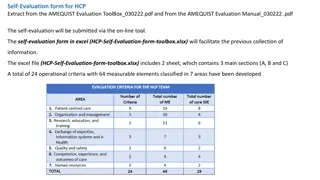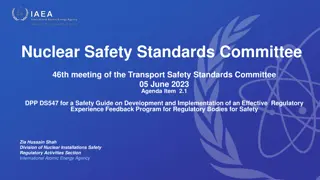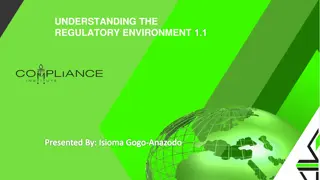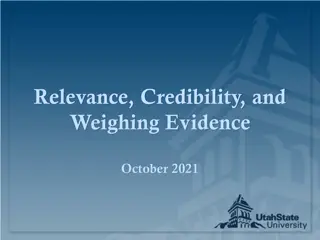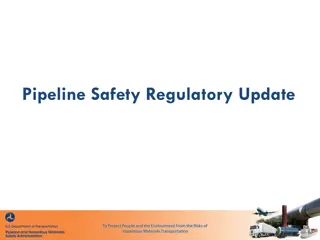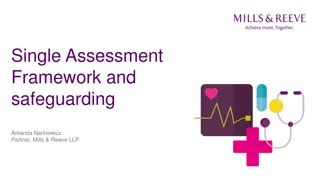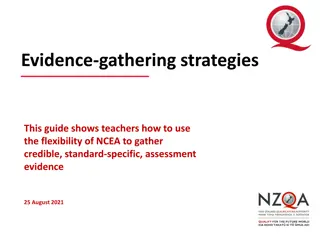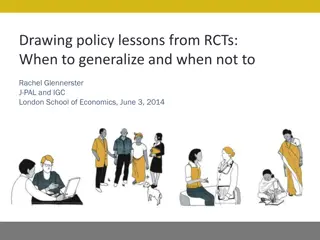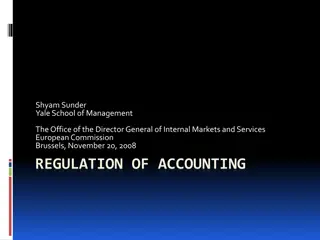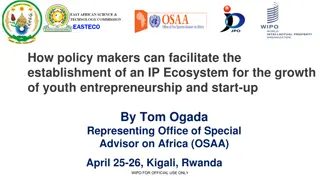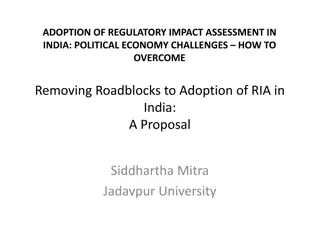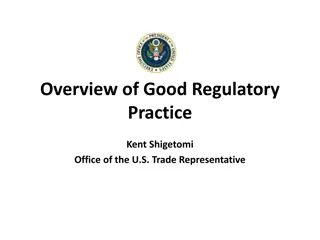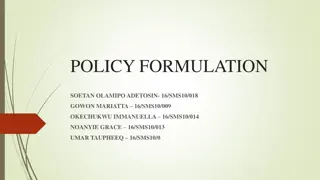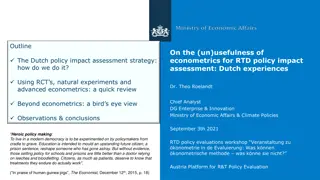Regulatory Impact Assessment: A Tool for Evidence-Based Policy Making
Regulatory Impact Assessment (RIA) is a formal and systematic policy tool used to examine and measure the benefits, costs, and effects of new or existing regulations. It is essential for evidence-based policy making and is widely utilized in countries like the US, Canada, UK, Germany, and Australia. RIA frameworks include consultations, problem description, policy objectives, identification of regulatory and non-regulatory options, assessment of costs and benefits, enforcement mechanisms, and selection/implementation processes. Emphasizing the importance of RIA, it helps control the quality of regulation, enhances competitiveness, and ensures that regulations align with policy objectives. Without RIA, regulations developed based on wishful thinking can lead to ineffective solutions, incorrect problem identification, conflicting government objectives, adverse consequences, frequent regulation changes, and burdens on businesses and citizens. Minimum requirements for RIA include starting at the inception of the regulation-making process, clearly defining problems and goals, evaluating alternative solutions, assessing costs and benefits, utilizing scientific expertise, engaging stakeholders, ensuring proportionality, and maintaining oversight.
Download Presentation

Please find below an Image/Link to download the presentation.
The content on the website is provided AS IS for your information and personal use only. It may not be sold, licensed, or shared on other websites without obtaining consent from the author.If you encounter any issues during the download, it is possible that the publisher has removed the file from their server.
You are allowed to download the files provided on this website for personal or commercial use, subject to the condition that they are used lawfully. All files are the property of their respective owners.
The content on the website is provided AS IS for your information and personal use only. It may not be sold, licensed, or shared on other websites without obtaining consent from the author.
E N D
Presentation Transcript
REGULATORY IMPACT ASSESSMENT A TOOL FOR EVIDENCE- BASED POLICY MAKING Daniel Trnka Deputy Head Regulatory Policy Division OECD
What is Regulatory Impact Assessment (RIA)? Formal and systematic policy tool and decision process to examine and measure the likely benefits, costs and effects of new or existing regulation In the OECD, used most often when developing new laws/regulations (US, Canada, UK, Germany, EU, Australia etc.)
Framework for Regulatory Impact Assessment C o n s u l t a t i o n s Definition Problem description Policy objectives Regulatory and Non-regulatory Options and Objectives Identification Assessment Costs Benefits Enforcement, compliance and monitoring mechanisms Selection and Implementation
Why is RIA important? Control the quality of regulation a step in improving competitiveness Evidence-based policy making: Is regulation the best available means to address the policy objective? Improves transparency both within government and civil society Simple language can make it understandable for everyone and easily accessible
Consequences of no RIA What happens when a regulation is developed based on wishful thinking? Regulation is not effective. The problem is not identified properly. The government tackles the problem in the wrong way. The regulation is contrary to other government objectives. Adverse and unexpected consequences. The regulation must be changed often as a result of poor design. Too many overlapping regulations and burdens on businesses and citizens. Etc .
Minimum requirements for RIA Always start at the inception of the regulation-making process; Clearly identify the problem and desired goals of the proposal; Identify and evaluate all potential alternative solutions; Always attempt to assess all potential costs and benefits, both direct and indirect; Be based on all available evidence and scientific expertise; Be elaborated in consultations with stakeholders and well communicated; Be proportionate to the significance of the regulation; Oversight is crucial
RIA and SMEs Costs of regulations usually disproportionately bigger for SMEs RIA helps to identify these costs and potentially less costly solutions (SME Tests) RIA also helps to identify potential mitigating measures, exemptions, etc. RIA helps to bring SMEs to the table
One-In, X-Out Requirement for regulators to offset regulatory costs Transparency about regulatory costs But what about benefits? Resource demanding, potential gaming Conceptual issues: What type of costs is measured; BAU, sunk costs; Future costs of existing regulation difficult to predict, subject to major change; What type of regulations is included
Regulatory sandboxes Regulations more and more behind technological developments Sandboxes create a safe space where companies can play with innovative products Differences in implementation Focus on collaboration between administration and stakeholders Businesses satisfaction questionable
How can OECD help? Regulatory Policy Review Focused scans/mini reviews Technical assistance in implementing regulatory management tools (e.g. RIA) Analysis of the current situation Suggesting institutional set up Action plan for implementation Developing a methodology Communication with stakeholders Training Awareness raising
THANK YOU FOR YOUR ATTENTION! Daniel.Trnka@oecd.org oe.cd/ria
